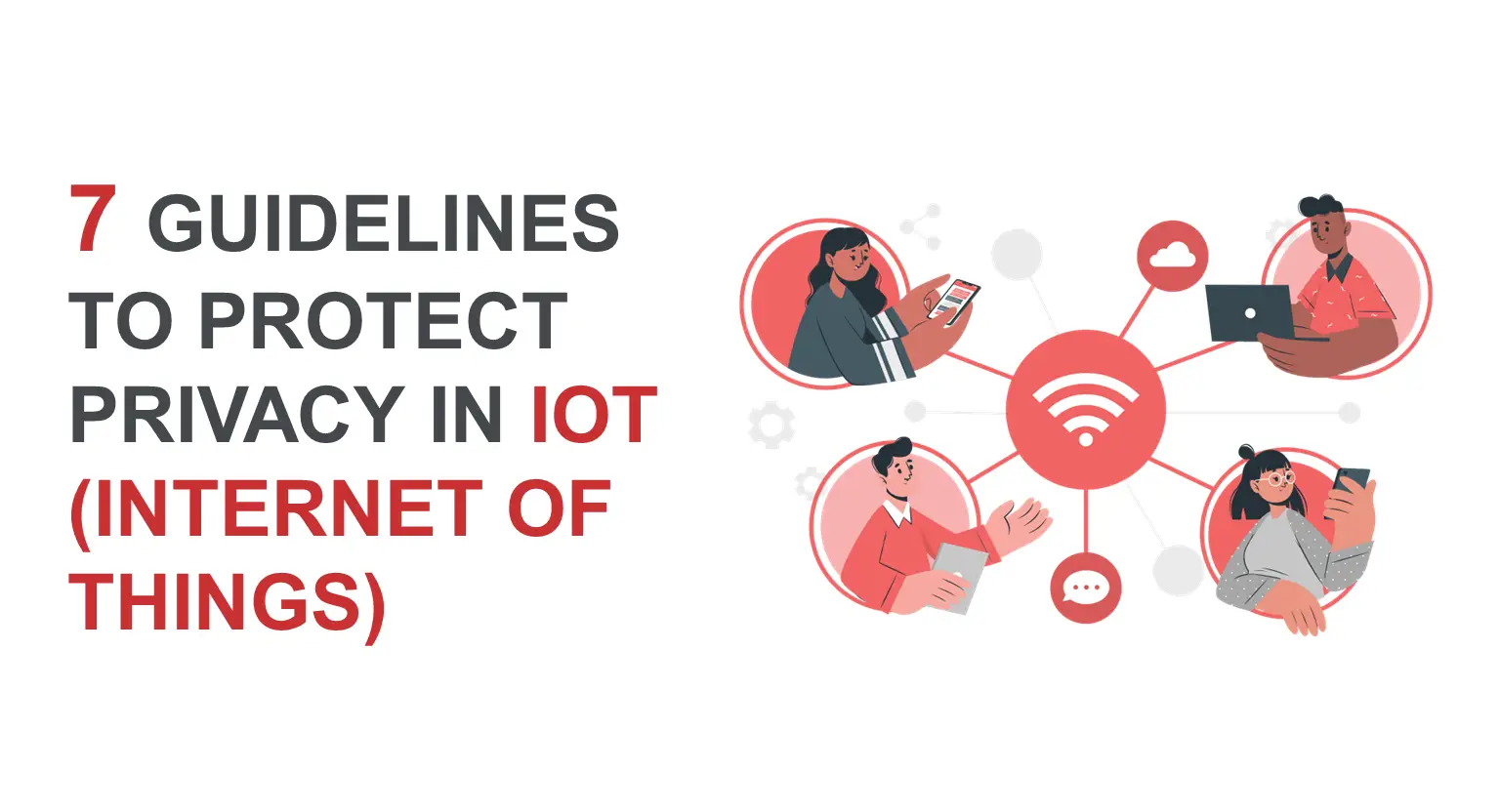7 Guidelines to Protect Privacy in IoT (Internet of Things)

1 Minutes 49 Seconds | 1974 views
Listen This Blog Now!
Introduction
The Internet of Things (IoT) has become an integral part of our lives. It has made our lives easier and more comfortable by connecting various devices to the internet. However, with the growth of IoT devices, the concern for privacy has increased. Privacy is a fundamental right that needs to be protected. Therefore, it is essential to establish guidelines to protect the privacy of individuals who use IoT devices. Here are some guidelines for privacy in IoT:
Privacy Guidelines for IoT
-
Minimize the data collected: Collect only the data necessary to provide the service or device's functionality. Collecting more data than necessary increases the risk of data breaches or misuse.
-
Pseudonymize the data: Pseudonymization is a technique that replaces personally identifiable information with artificial identifiers. Pseudonymizing data can help protect the privacy of individuals by making it harder to link data back to an individual.
-
Be transparent: Provide clear and concise information about what data is being collected, how it is being used, and who has access to it. Transparency is critical to building trust with users.
-
Authorize access: Ensure that only authorized individuals or entities can access the data collected. Access controls should be implemented to restrict access to only those who need it.
-
Monitor access: Monitor who has accessed the data and when. This can help detect and prevent unauthorized access or misuse of data.
-
Get consent: Obtain consent from individuals before collecting, processing, or sharing their data. Consent should be freely given, specific, informed, and unambiguous.
-
Give customers control: Provide individuals with control over their data. Individuals should be able to access, correct, delete, or restrict the processing of their data.
Conclusion
The privacy of individuals who use IoT devices needs to be protected. These guidelines can help ensure that IoT devices and services are designed and operated in a privacy-friendly manner. Minimizing the data collected, pseudonymizing the data, being transparent, authorizing access, monitoring access, getting consent, and giving customers control are essential principles to protect the privacy of individuals. Following these guidelines can help build trust with users and maintain the integrity of IoT systems.
Protecting your privacy in the age of IoT is crucial. CyberNX’s Digital Protection Services offer comprehensive solutions for all your privacy and security concerns. With our expertise in Cybersecurity, we can help you implement the privacy guidelines mentioned above, ensuring that your personal data is safe and secure. Contact us today to learn more about our services and how we can help you protect your privacy.
Table Of Content
- Introduction
- Privacy Guidelines for IoT
- Minimize data collection
- Pseudonymize
- Be transparent
- Authorize access
- Monitor
- Get consent
- Give customers control
- Conclusion
Introduction
The Internet of Things (IoT) has become an integral part of our lives. It has made our lives easier and more comfortable by connecting various devices to the internet. However, with the growth of IoT devices, the concern for privacy has increased. Privacy is a fundamental right that needs to be protected. Therefore, it is essential to establish guidelines to protect the privacy of individuals who use IoT devices. Here are some guidelines for privacy in IoT:
Privacy Guidelines for IoT
-
Minimize the data collected: Collect only the data necessary to provide the service or device's functionality. Collecting more data than necessary increases the risk of data breaches or misuse.
-
Pseudonymize the data: Pseudonymization is a technique that replaces personally identifiable information with artificial identifiers. Pseudonymizing data can help protect the privacy of individuals by making it harder to link data back to an individual.
-
Be transparent: Provide clear and concise information about what data is being collected, how it is being used, and who has access to it. Transparency is critical to building trust with users.
-
Authorize access: Ensure that only authorized individuals or entities can access the data collected. Access controls should be implemented to restrict access to only those who need it.
-
Monitor access: Monitor who has accessed the data and when. This can help detect and prevent unauthorized access or misuse of data.
-
Get consent: Obtain consent from individuals before collecting, processing, or sharing their data. Consent should be freely given, specific, informed, and unambiguous.
-
Give customers control: Provide individuals with control over their data. Individuals should be able to access, correct, delete, or restrict the processing of their data.
Conclusion
The privacy of individuals who use IoT devices needs to be protected. These guidelines can help ensure that IoT devices and services are designed and operated in a privacy-friendly manner. Minimizing the data collected, pseudonymizing the data, being transparent, authorizing access, monitoring access, getting consent, and giving customers control are essential principles to protect the privacy of individuals. Following these guidelines can help build trust with users and maintain the integrity of IoT systems.
Protecting your privacy in the age of IoT is crucial. CyberNX’s Digital Protection Services offer comprehensive solutions for all your privacy and security concerns. With our expertise in Cybersecurity, we can help you implement the privacy guidelines mentioned above, ensuring that your personal data is safe and secure. Contact us today to learn more about our services and how we can help you protect your privacy.
Share this on: